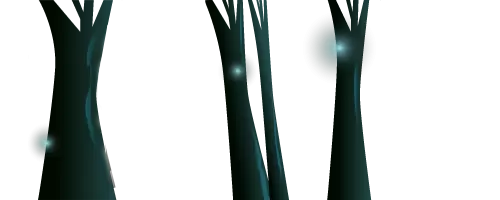EVERYTHING YOU NEED TO KNOW ABOUT LSD

LSD, short for lysergic acid di-ethylamide, is a very strong hallucinogenic drug. LSD is known for the long and intense trip you can experience with it, although the latter depends mainly on the dose. It is capable of changing your reality considerably. Hence its affectionate nickname 'Alice', after Alice in Wonderland. So don't underestimate this drug! Read all about it here. What should you know about LSD before you start?
What is LSD and how do you take it?
LSD is usually taken in the form of small paper squares; called seals or blotters. These are soaked in a liquid in which the LSD is dissolved. It can also be found in the form of pills, capsules or liquid drops, but this is rarer than seals.
The usual dosage ranges from 50 to 200 micrograms, although some users take higher doses for an even more intense experience. Especially when there is tolerance to the drug, a serving of two seals is not so crazy. You can also microdose with LSD. Similar to microdosing with magic mushrooms and truffles, in this case you take 5%-10% of a normal dose. The benefits should be the same as microdosing psilocybin: better focus and, if you're lucky, more appreciation for life.
The brief history of LSD
LSD was born in a lab, and therefore it is not very old. Tripping we humans did, of course, thousands of years back on magic mushrooms and the like. But LSD was only first synthesised in 1938 by Swiss chemist Albert Hofmann. Its real popularity among the public came only in the 1960s. Later, the drug came into the picture as a potential lifeline to get rid of trauma and depression. Until the 1980s, research was still being done on this drug - it was still allowed then. Anno now, it is not one of the most popular drugs: about 2% of Dutch people have ever used it at all. Also good to know is that this drug is on List 1 of the Opium Act. In other words, trafficking and possession are prohibited by law. However, being under the influence of LSD is not. So no fear of the police when you are tripping.
How does LSD work? You can expect these effects
After ingestion, LSD usually starts working within 30-60 minutes. The effects can last for up to 12 hours, so be sure to factor that into your schedule. For instance, get enough food for during and after the trip, so you don't have to go to the supermarket while hallucinating or tired, or struggle with a delivery app.
The effects of LSD are often described as quite intense, especially when the dose is high. However, they can vary from person to person; this depends, among other things, on your sensitivity. And this can also vary in one person over time. Some people get extra creative and associative from this drug, so play up to that especially. Literally, if you like: prepare craft and drawing materials and think of a few playful activities in advance to bring out your inner child. Another well-known effect of this drug: you feel more connected to the world around you, and especially nature and the cosmos. When you feel safe (and you're not tripping too hard), especially seek out the outside world and connect with the trees. 12 hours is a long sit. Therefore, take the necessary precautions regarding the end of your trip. For instance, it is smart to have a (sober) trip sitter who keeps his head during the trip and can guide you during the experience.
Can it have negative effects?
Also know that, as with other psychedelics, LSD can magnify your mood. If you are stressed or depressed, then tripping on it is not necessarily a smart idea. So while LSD is often associated with positive experiences, it can also have negative effects. Some people experience feelings of anxiety, paranoia, panic, confusion, dips and (very occasionally, thankfully) psychotic symptoms. The effects of LSD are strongly determined by the environment and the state of mind you are in. So mainly trip in familiar surroundings, including the people around you. Want to avoid a bad experience? Then read this article on how to avoid a bad trip. By the way, LSD is not addictive and does not cause physical dependence.
To what extent are yopo, ololiuqui, Hawaiian baby woodrose and morning glory similar to LSD?
Yopo, ololiuqui, Hawaiian baby woodrose and morning glory are all plants that can produce psychedelic effects similar to LSD. Think visual effects, a different perception of reality, time and space, increased sensitivity to sensory stimuli and changes in consciousness. While they can have similar effects, the intensity and duration of the experience can differ between these plants and LSD. Are you a fan of LSD and ready for some variety? Then feel free to try these variations of Alice!

















